 'Philips' branded equipment was manufactured by Philips Electrical Industries of N.Z. Ltd,
they had various distributors.
Currently there are 117 documented models.
'Philips' branded equipment was manufactured by Philips Electrical Industries of N.Z. Ltd,
they had various distributors.
Currently there are 117 documented models.
History
Initially, Philips imported radios from England and Holland for the NZ market. Between 1934 and 1936/7 they supplemented their lineup with local sets made for them by Radio Corporation of New Zealand and others imported from Australia. Once RCNZ ceased making sets for other brands in 1937 Philips returned to importing their stock. In around 1938 when import restrictions / tariffs were increased, it no longer became financially viable to bring sets in from overseas and so in 1939 Philips began local manufacturing for the 1940 year. This only lasted a few years due to wartime restrictions on industry across the country. After the war, production resumed with much enthusiasm and Philips N.Z. grew in leaps and bounds. A setback occurred in October of 1947 when fire destroyed the top floor of their factory in Wakefield St, the damage including hundreds of radio cabinets and much radio / electrical equipment. - and in the 1980's, when imported products destroyed many NZ-based manufacturing industries, Philips was the 'last man standing' in large-scale domestic audio production in New Zealand. They had taken over Pye NZ (by default after Pye UK was bought out by Philips UK), and Pye had previously taken over both Radio Ltd and Radio Corporation of New Zealand - so this left Philips in a very strong position in NZ.
The First NZ Model
It's worth noting that in the book "Philips in New Zealand" by Leighton Lord (Managing Director of Philips NZ from 1947-1957 before becoming Chairman of the Board of Directors), it is stated that the model 636 was Philips first model, produced at their new Blair St factory in Wellington in 1936. This model has all the hallmarks of a Radio Corporation of New Zealand model - including the service documentation, which is both in their style, and bears their name. The chassis and coil cans are also of RCNZ manufacture. If the 636 really was the first set 'manufactured' by Philips NZ in their new factory then it's likely that they only undertook the final assembly and testing.
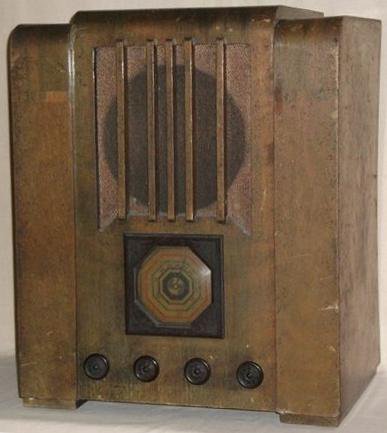
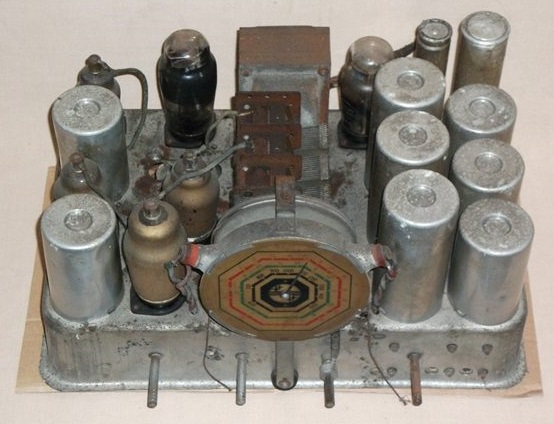
Philips NZ model 636P (1936, 6 Valve, All Wave)
The book also states that the model 636 was a dual-wave radio - which is incorrect. The 636 was an all-wave (3-band) set. However, there was also a model 626, which was dual wave. This model has an atypical (for Radio Corp) traditional 'square' chassis (as does its broadcast band little brother, the model 516) - and so its possible that the 626 and 516 sets, while appearing to be of Radio Corp NZ design and containing much RCNZ componentry, were assembled at the Philips factory.
Philips NZ model 626P (1936, 6-valve + magic eye, dual wave)
Lending evidence to the model 626, rather than the 636, being the model that Leighton Lord referred to is the signature on the model 626 schematic. RS is likely Ralph Slade (some info here: https://www.nzelectronics.org.nz/slade-lectures) who was the Technical Manager at Philips NZ at the time. He would go on to be the Controller of Radio Production for the government during World War II before returning to Philips at wars end.

Model numbers
From around 1940 until about 1952, the codes don't seem to have much meaning - although the Mullard equivalents will provide more information (most Philips models were also released under the Mullard brand). For example, the 1945 Philips model 540 (The 5 seems to indicate 5-valve, but beyond that, the 4 and 0 don't make much sense. The equivalent Mullard model is 515 - the first digit indicates the valve count - 5-valve, and the last the date - 5 = 1945. The middle digit (1) just seems to be the particular model from any given year.
Philips then follow a reasonably standard code from around 1952, in the style BZ126A. Some time in 1958 the luxury code was moved between the model type and country code (so if the BZ126A had been made after 1958, it would have been coded B1Z26A), possibly to avoid confusion over the year indicator between two decades or just to come into line with international codes. These 1952-on codes break down as follows:
BZ126A
B = Type: Tabletop radio
Z = Country: New Zealand
1 = Luxury Indicator: Budget model
2 = Year of release (1952 in this case)
6 = Model or style code
A = Power: AC
Types:
| A | Tuner |
| B | Mantle / Tabletop Radio |
| F | Console / Radiogram / Stereogram |
| G | Tablegram (later. stereogram, separate speakers) ? uncertain... |
| H | Tablegram |
| L | Portable |
| N | Car Radio |
| P | Portable / Car Radio ? |
| T | Television |
Power Options (sometimes in combinations, eg: AB for mains and battery operation):
| A | AC Mains (230V, 50Hz in NZ) |
| B | Batteries |
| T | Transistor - Battery (most likely 6 or 9V) |
| U | AC / DC Mains - Hot chassis sets - beware! |
| V | Vibrator / Accumulator sets |
Luxury Code: 0 to 9, with 0-2 being cheap budget sets, 3-7 being mid-range sets and 8-9 being high-end and expensive.
Notes: car radios are often code (N), then country code (Z) - giving them an extra 'Kiwi' flavour. These models often have Uxxxx codes as well, which are GM equivalent part numbers (for example the NZ627V is also known by the General Motors part number U1198).
23Rxxxx appears as a style of code in later years (60's-80's) and may have been an international standardisation for the computerisation of Philips parts and products. The 23 is understood to be the code for New Zealand. The following codes are believed to be correct but please get in touch if you can update this at all.
- 23RL is Portable Transistor Radios (L was the previous portable radio code).
- 23IC (to be confirmed) - Integrated Circuit based portable radios.
- 23RB is for mantle radios (B was the previous mantle radio code)
- 23RR is for radio recorders - ie: radio cassette recorders.
- 23RF is for radiograms.
- 23GF is for record players (battery or mains, mono or stereo).
- 23RN is for car radios / car cassette radios.
- 23N (to be confirmed) - is for cassette players / recorders as well as reel-to-reel players / recorders.
- 23GA is for hi-fi turntables,
- 23RH is for hi-fi stereo amplifiers, hi-fi tuner / amps and hi-fi speakers.
So, generally speaking: R - Radio, G - Gramophone, N - Cassette. Other codes have been sighted, but these ones should cover most sets.
Philips Hi-Z
Also of interest in Philips products is their Hi-Z technology, which did away with output transformers and replaced them with high-impedance speakers.

| IMAGE | YEAR | MODEL CODE | VALVES | BANDS |
|---|---|---|---|---|
 |
1934 | Philips model 5H | 5 | Broadcast |
 |
1934 | Philips model 5V | 5 | Broadcast |
 |
1934 | Philips model 6V | 6 | Broadcast |
 |
1935 | Philips model 666A 'Pylon' | 6 | Dual Wave |
 |
1935 | Philips model 666A | 6 | Dual Wave |
 |
1935 | Philips model 666D 'Pylon' | 6 | Dual Wave |
 |
1935 | Philips model 666S 'Pylon' | 6 | Dual Wave |
 |
1936 | Philips P516 | 5 | Broadcast |
 |
1936 | Philips P626 | 6 | Dual Wave |
 |
1936 | Philips P636 | 6 | All Wave |
 |
1937 | Philips P715 'Twilight Dial' | 7 | Broadcast |
 |
1940 | Philips model 042 | 4 | Dual Wave |
 |
1940 | Philips model 152 | 5, with magic eye on some | Dual Wave |
 |
1940ish | Philips model 157 | 5 + magic eye | All Wave |
 |
1940ish | Philips model 158 | 5 + magic eye | All Wave |
 |
1941 | Philips model 153 | 5, with magic eye on some | Dual Wave |
 |
1941 | Philips model 155 'Super Five' | 5, with magic eye on some | Dual Wave |
 |
1941 | Philips model 252 | 5 + magic eye | Dual Wave |
 |
1945 | Philips model 540 'Philette' | 5 | Broadcast |
 |
1945 | Philips model 593 'Polyband' | 5 | 4 |
 |
1946 | Philips model 594 | 6 + magic eye | All Wave |
 |
1946 | Philips model 596 | 8 + magic eye | All Wave |
 |
1946 | Philips model 598 | 6 + magic eye | All Wave |
 |
1947 | Philips model 599 | 5 | Dual Wave |
 |
1947 | Philips model 601 | 8 + magic eye | |
 |
1947 | Philips model 647 | 5 | Dual Wave |
 |
1947 | Philips model 648 | 5 | Dual Wave |
 |
1947 | Philips model 648V | 5 | Dual Wave |
 |
1948 | Philips model 209 'Room-To-Room' | 5 | Broadcast |
 |
1948 | Philips model 461 | 6 | Broadcast |
 |
1948 | Philips model 465 | 6 | Dual Wave |
 |
1949 | Philips model 305 | 6 | Broadcast |
 |
1949 | Philips model 405 | 6 | Broadcast |
 |
1949 | Philips model 499 'Roll Top' | 6 | Broadcast |
 |
1949 | Philips model 545 'Double-Duty' | 6 | Broadcast |
 |
1949 | Philips model 602 | 8 + magic eye | 5 |
 |
1950 | Philips model 208 | 4 | Broadcast |
 |
1950ish | Philips model 210 | 5 | Dual Wave |
 |
1950 | Philips model 210A | 5 | Dual Wave |
 |
1950 | Philips model 234 | 5 | Broadcast |
 |
1951 | Philips model 645 'Double Duty' | 5 + metal rectifier | Broadcast |
 |
1952ish | Philips model 235 | 5 | All Wave |
 |
1952 | Philips BZ126A | 4 | Broadcast |
 |
1952 | Philips BZ226A 'Duoplayer' | 4 | Dual Wave |
 |
1952 | Philips BZ327A 'Duoplayer' | 5 | Dual Wave |
 |
1952 | Philips BZ426A 'Multiplayer' | 5 | All Wave |
 |
1952 | Philips HZ726A | 5 | Broadcast |
 |
1952 | Philips LZ536UB 'Town and Country' | 5 + metal rectifier | Broadcast |
 |
1953 | Philips BZ437A 'Arborlite' | 5 | All Wave |
 |
1953 | Philips BZ437A 'Tablegram' | 5 | All Wave |
 |
1953 | Philips BZ526A | 5 | Broadcast |
 |
1953 | Philips FZ937A | 10 + eye | 5 |
 |
1954 | Philips BZ146U | 4 | Broadcast |
 |
1954 | Philips BZ446A | 5 + magic eye | Broadcast |
 |
1954ish | Philips BZ626A | 5 | All Wave |
 |
1955 | Philips BZ156U | 4 | Broadcast |
 |
1955 | Philips BZ456A | 5 + magic eye | All Wave |
 |
1955 | Philips BZ737A | 6+magic eye | 5 |
 |
1956 | Philips B5Z66A | 5 + magic eye | All Wave |
 |
1956 | Philips BZ166U 'Philette' | 4 | Broadcast |
 |
1956 | Philips BZ167U 'Philette Fiesta' | 4 | Broadcast |
 |
1956 | Philips BZ366A 'Metropolitan' | 5 | Broadcast |
 |
1956 | Philips FZ866A 'Stockholm MKI' | 7 | All Wave |
 |
1956 | Philips HZ756A 'Vistagram' | 5 | Broadcast |
 |
1956 | Philips LZ546UB 'Town and Country' | 5 and metal rectifier + magic eye | Broadcast |
 |
1957 | Philips AG1014 'Automatic Record Changer' | ||
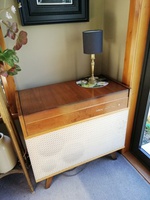 |
1957 | Philips FZ576A 'Copenhagen' | 7 | Broadcast |
 |
1957 | Philips FZ876A 'Festival Hall MKI' | 7 + magic eye | All Wave |
 |
1957 | Philips FZ967A 'Carnegie Hall MKI' | 11 + magic eye | 4 |
 |
1957 | Philips L4Z65BT 'Transworld Portable' | 3 valve, 1 diode, 3 transistors | 4 |
 |
1958 | Philips B2Z69U 'Riviera' | 5 | Dual Wave |
 |
1958 | Philips B3Z75U 'Continental' | 5 | All Wave |
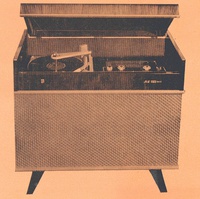 |
1958 | Philips FZ586A 'Copenhagen MKII' | 7 | Broadcast |
 |
1958 | Philips FZ886A 'Festival Hall MKII' | 7 valve + transistor pre-amp + magic eye | All Wave |
 |
1958 | Philips L3Z73T 'Transistor Ace' | 7 transistors, 1 diode | Broadcast |
 |
1959 | Philips B1Z95U 'Philette Tunetta' | 4 | Broadcast |
 |
1959 | Philips B4Z69A | 6 + magic eye | 4 |
 |
1959 | Philips B5Z97A 'Hilversum Plano' | 6 + magic eye | 4 |
 |
1959 | Philips F6Z96A 'Albert Hall' | 7 or 11 | All Wave |
 |
1959 | Philips F6Z97A 'Grand Classique MKII' | 7 or 11 | All Wave |
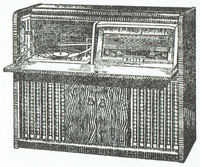 |
1959 | Philips F7Z96A 'Beethoven' | 10 | All Wave |
 |
1959 | Philips F8Z96A 'Westminster Hall' | 13 + magic eye | All Wave |
 |
1959 | Philips L4Z95T 'Town and Country Transworld' | 7 transistor, 2 diode | 4 |
 |
1960ish | Philips AG1015 | ||
 |
1960 | Philips B1Z86U 'Contrasta' | 4 | Broadcast |
 |
1960 | Philips B1Z87U 'Contrasta' | 4 | Broadcast |
 |
1960 | Philips F5Z06A 'Philharmonic' | 6 | Broadcast |
 |
1961 | Philips B3Z96T 'Continental Cordless' | 7 transistors, 2 diodes | 4 |
 |
1961 | Philips B5Z17A 'Hilversum Conbrio' | 8 + magic eye | 4 |
 |
1961 | Philips F5Z19A 'Eleganzia' | 7 | Broadcast |
 |
1961 | Philips F7Z17A 'Aristona Plano' | 6 + magic eye | 4 |
 |
1961 | Philips F7Z18A 'Grande' | 8 + magic eye | 4 |
 |
1961 | Philips F8Z18A 'Concerto' | 8 + magic eye | 4 |
 |
1961 | Philips F9Z06A 'Festival Hall MKV' | 15 + magic eye | All Wave |
 |
1961 | Philips L3Z74T 'Transistor Ace' | 7 transistors, 1 diode | Broadcast |
 |
1961 | Philips L3Z90T 'Personic' | 7 transistors, 1 diode | Broadcast |
 |
1962 | Philips B0Z17T 'Philette Transistor' | 6 Transistor, 2 Diode | Broadcast |
 |
1963 | Philips F4Z37A 'Concorde' | 8 (including two rectifiers) | Broadcast |
 |
1963 | Philips F5Z37A 'Celestial' | 8 (including two rectifiers) | Broadcast |
 |
1963 | Philips F5Z38A 'Centurii Cornergram' | 8 (including two rectifiers) | Broadcast |
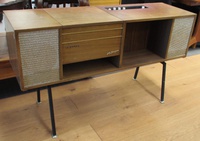 |
1963 | Philips F6Z37A 'Capricorn' | 8 (including two rectifiers) | Broadcast |
 |
1964 | Philips Super Crystal De-Luxe 'Crystal Set' | 0 | Broadcast |
 |
1965 | Philips B2Z56U | 4 | Broadcast |
 |
1965 | Philips F6Z56A | ||
 |
1966 | Philips F4Z67A 'Concorde' | 7 | Broadcast |
 |
1966 | Philips F5Z67A 'Celestial' | 7 | Broadcast |
 |
1967ish | Philips 23RL475 'Four Aces' | 7 transistors, 3 diodes | Broadcast |
 |
1970ish | Philips 23GF420 'Philitina' | 4 transistors | |
 |
1970ish | Philips EV1802 'Mono Amplifier' | Transistors (Germanium?) | |
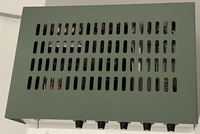 |
1970ish | Philips EV1803 | Transistors (Germanium?) | |
 |
1970ish | Philips EV1804 | Transistors (Germanium?) | |
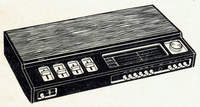 |
1975 | Philips 23RH756 'Ambio 4' | 30 transistors, 19 diodes | Broadcast |
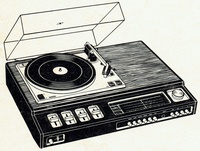 |
1975 | Philips 23RH857 'Ambio 4' | 30 transistors, 19 diodes | Broadcast |
 |
1975 | Philips 23RH858 'Ambio 4' | 30 transistors, 19 diodes | Broadcast |
 |
1975 | Philips 23RH959 'Ambio 4' | 30 transistors, 19 diodes | Broadcast |
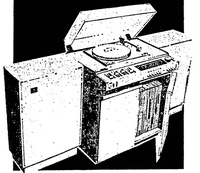 |
1979 | Philips 23AH897 | Broadcast | |
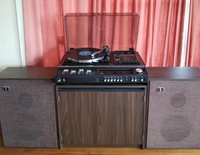 |
1979 | Philips 23RH989 '3-in-1 Stereo System' | Broadcast |